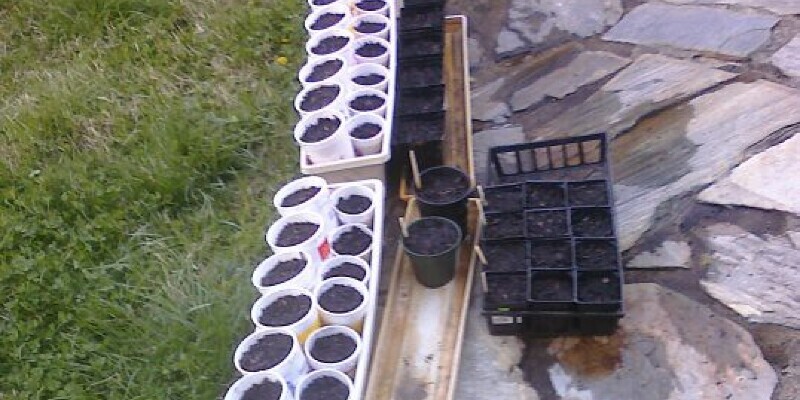
Lobelia plants have been staples in the home garden, selected for their extreme color as well as the striking form of several species. The genus Lobelia incorporates several hundred species which are part of the campanula (Campanulaceae) family members. Most types of lobelia possess the bell-shaped flowers feature of the campanulas, but they also may differ dramatically in appearance.
Edging and Trailing Varieties
Lobelia erinus is a perennial in USDA plant hardiness zones 10 to 11, typically grown as an annual in cooler zones. The plants are 4 to 9 inches high, with light green leaves, and create masses of delicate white or blue flowers; cultivars have purple, red, violet and pink colors. Compact, upright types are used for edge edging and rock gardens, while trailing varieties suit plant containers, window boxes and hanging baskets, where they could spill over the edge.
Cardinal Flower
Cardinal flower (Lobelia cardinalis) is native to North America in USDA zones 3 to 9, growing 2 to 3 feet high with a vertical mound of green foliage, and posture, scarlet-red, tubular flowers on spikes. Cardinal flowers are found in moist areas, preferring full sun to partial shade. Cultivars often have more blooming periods and various colors, such as “Arabella’s Vision” (bright red) and “Twilight Zone” (Wild). Foliage colour also varies, like a cultivar with bronze leaf (“Fried Green Tomatoes”).
Mexican Lobelia and Great Blue Cardinals
Mexican lobelia (Lobelia fulgens) grows wild in Mexico and Texas, or USDA zones 7 to 9. It is similar in appearance to L. cardinalis, except for leaf that is sometimes bronze to dark red in shade. Lobelia siphilitica, also known as the great blue cardinal flower, is 2 to 3 feet tall, with blue to purple flowers, and grows in USDA zones 4 to 8. The “Lilac Candles” cultivar has a compact form with flowers in shades of blue and purple.
Hybrids
Hybrids developed from Lobelia fulgens, L. cardinalis, and L. siphilitica are designated as Lobelia x speciosa. Hybrids feature dark green leaf with hints of crimson, bronze or purple, forming a basal rosette. Tubular flowers grow on spikes in lavender, pink and crimson colors, with long flowering periods from July to September. The plants are generally around 2 1/2 feet tall, adding height to your flower border, and also attracting birds and butterflies.
